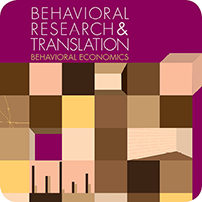2011 Behavioral Economics Conference
 Title: From Demand Curves to Public Policy
Title: From Demand Curves to Public Policy
Date: Friday, March 25-Sunday, March 27, 2011
Location: Hyatt Regency; Chicago, IL
Among the most significant theoretical advances in the study of behavior over the past few decades has been the integration of economic and psychological perspectives-what has come to be called behavioral economics. A chief insight of behavioral economics is that behavior is always subject to constraints-restricted income, limited options, incomplete and uncertain information about the world-and that our theories need to take such factors into account. Behavioral economics, broadly construed, is an approach to understanding how these constraints impact behavior. It has also been fruitfully applied in recent years to a wide range of health-related problems, including addictions, gambling, and obesity, to name just a few. Behavioral economics is thus of practical as well as theoretical importance.
Behavioral economics is not a single unified theory, but, rather, a family of models and interpretations sharing some common assumptions. There are two main branches of behavioral economics, arising from somewhat different traditions of research and interpretation. One comes mainly from the animal laboratory and focuses on consumer demand theory-how the value of a commodity is influenced by economic variables (e.g., price, income, availability of substitutable goods). The other comes mainly from research with human subjects and focuses on anomalies or biases in judgment-systematic departures from utility maximization. Although both are concerned broadly with behavior in an economic context, these two branches of behavioral economics have developed largely in parallel, with little cross-fertilization of ideas and concepts. This is unfortunate, because these two traditions of research and interpretation yield complementary perspectives, and both are necessary parts of a comprehensive behavioral-economic conception of the subject matter.
A major aim of this conference is to constructively engage these different behavioral-economic perspectives, producing new insights into behavioral and neural mechanisms of economic behavior, including problem behavior (e.g., addictions, gambling). We will also consider how behavioral economics may inform public policy. The plan is to include 3 clusters of interrelated presentations, each followed by a moderator-led discussion.
This conference will be a single track event with 10 invited presenters:
Economics and Social Policy
Neuroeconomics
Impulsivity and Discounting
Information regarding hotel and travel accommodations can be found in a link on the left. Questions regarding the Behavioral Economics Conference can be directed to the ABAI office at (269) 492-9310 or via e-mail at convention@abainternational.org.